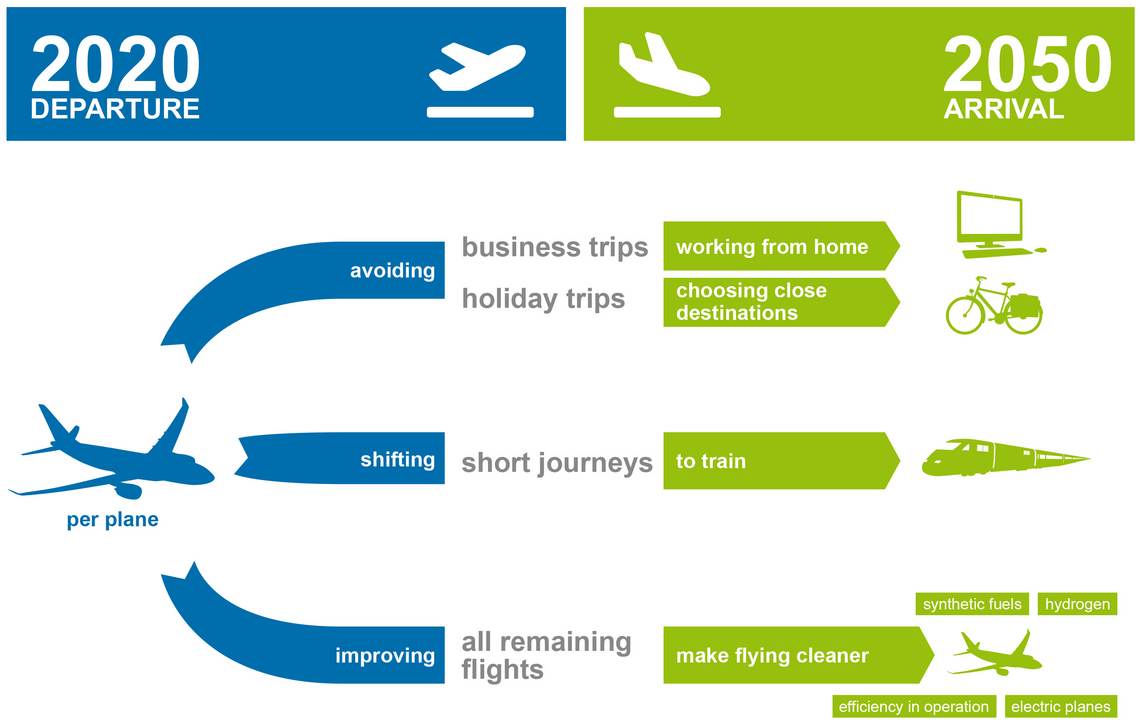
Climate protection in aviation – future perspectives
In the long term, the only way forward is to do without: if we want to limit global heating to 1.5°C, CO₂ emissions from aviation also must be reduced to zero and the impact of non-CO₂ effects must be greatly reduced. Only in this way can the climate targets actually be met.
We address in the following what this means for the future of aviation. We outline the possibilities, as well as the limits in the decades ahead. What are the forecasts for the future development of aviation? What technologies are available to make unavoidable flights more climate-friendly in the future? How large is their potential to avoid emissions and will they be available “in time”?
The combination effect
One thing is clear: we need a combination of different measures. The simplest and most effective way to protect the climate in aviation is, of course, to avoid flying. Digitization, for example, offers great opportunities to reduce the number of business trips. But the frequency of private long-distance travel also needs to be re-considered. A second important element is the shift of passengers from short-haul flights to rail. Furthermore, new technologies such as the use of hydrogen or synthetic kerosene will be necessary to strongly decrease the climate impact of flights.
